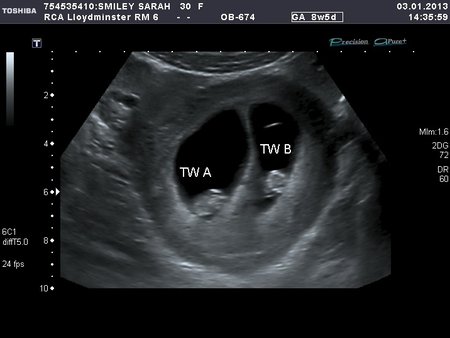What is a dating ultrasound
Dating > What is a dating ultrasound
Click here: ※ What is a dating ultrasound ※ ♥ What is a dating ultrasound
Ask about photos and how much it costs when you check in for your ultrasound. The report from the ultrasound will be sent to your caregiver.

Gestational age is historically derived on the basis of the first day of the last menstrual period LMP. This is called the dating scan. Does screening for Down's syndrome happen at the dating scan. You might be offered another test to find out for certain if there is a problem. For BPD the outer—outer diameter was measured perpendicular to the midline and for HC an autobus was drawn around the outline of the skull. Your choice will be respected if you decide not to have the scans, and your antenatal care will continue as normal. National Collaborating Centre for Women's and Children's Health NCCWCH. American Institute for Ultrasound in Medicine. How prime are ultrasounds in calculating gestational age. An example of this dating is shown in Figure 53-3. If you prefer, you can have a.
The objectives of this study were, first, to develop charts for ultrasound dating of pregnancy based on crown—rump length and biparietal diameter and, second, to derive reference curves for normal fetal growth based on biparietal diameter, head circumference, transverse cerebellar diameter, abdominal circumference and femur length from 10 weeks of gestational age onwards. The ultrasound is usually done through your belly, though sometimes a offers better views. As soon as data from the LMP, the first accurate examination, or both ultrasound obtained, the gestational age and the EDD should be determined, discussed with the patient, and documented clearly in the medical record.

7 Week Ultrasound - Am J Obstet Gynecol 2004;190:1077—81. It's wonderful to see a little blob with a heartbeat that will become your baby.

One of the most important aspects of obstetrical care is to date, as precisely as possible, the beginning of pregnancy so that the estimated time of arrival ETA can be calculated sometimes referred to as the estimated date of confinement — EDC. And yet, even with all of the available technology, one of the puzzles of modern obstetrics, is that the obstetrician has not yet learned how to accurately date the beginning of a pregnancy. Pregnancy can be measured in two different ways. The most common and most often used in clinical obstetrics is the measurement of the gestational age of the pregnancy. The gestational age of the pregnancy is measured from the first day of the last menstrual period. In this way of dating the pregnancy, the pregnancy is 40 weeks in duration on average instead of the actual 38 weeks. In other words, it dates the pregnancy, on average, two weeks longer than it is. The other way of measuring the dates of the pregnancy is to measure the fetal age. The fetal age of the pregnancy is measured from the time of conception or the estimated time of conception ETC. When measuring the pregnancy in this fashion, it will be 38 weeks long or two weeks shorter than the gestational age dates. The fetal age, of course, is the actual age of the pregnancy. Historically, the obstetrician has focused on the first day of the last menstrual period for two reasons. First of all, the menstrual flow itself is a fairly dramatic symptom which the woman can be expected to remember. In addition, it is easy to teach her to record the first day of the last menstrual period so that when that information is elicited by the physician, at a later time, it is available. However, in the midst of all of this, the obstetrician and many women have missed the point that the cervical mucus discharge is very much a flow in the same fashion as the menstrual flow. In some countries, they refer to menstruation as the red flow and the mucus discharge as the white flow. Unfortunately, modern obstetrics has paid little attention to the white flow. Therefore, one can date the pregnancy according to its true date or true beginning or in fetal age terms. This is measured by evaluating the acts of intercourse that occur during the time of fertility and establishing an estimated time of conception through this approach. We have studied 173 patients in a consecutive fashion who have been charting the CrMS at the time of conception. The ETC and the ETA were calculated. In this group of patients, early ultrasound dating of the pregnancy was also obtained. In Table 53-3, the results of that evaluation are shown. An accurate date for the beginning of pregnancy can be established with the use of the CrMS. This correlates well with the ultrasound dates and the estimated due date or ETA. The CrMS dates were highly accurate with the two being within 10 days of each other in 100 percent of the cases. An example of this dating is shown in Figure 53-3. Here, a pregnancy occurring in a longer cycle where the Peak Day occurred on Day 26 of the cycle is shown. If this pregnancy is calculated in the traditional fashion, there will be a 12-day discrepancy between the dates as customarily calculated from the last menstrual period and the actual date of the pregnancy which is calculated from the Peak Day. The Peak Day, of course, will be much more accurate.
Last updated